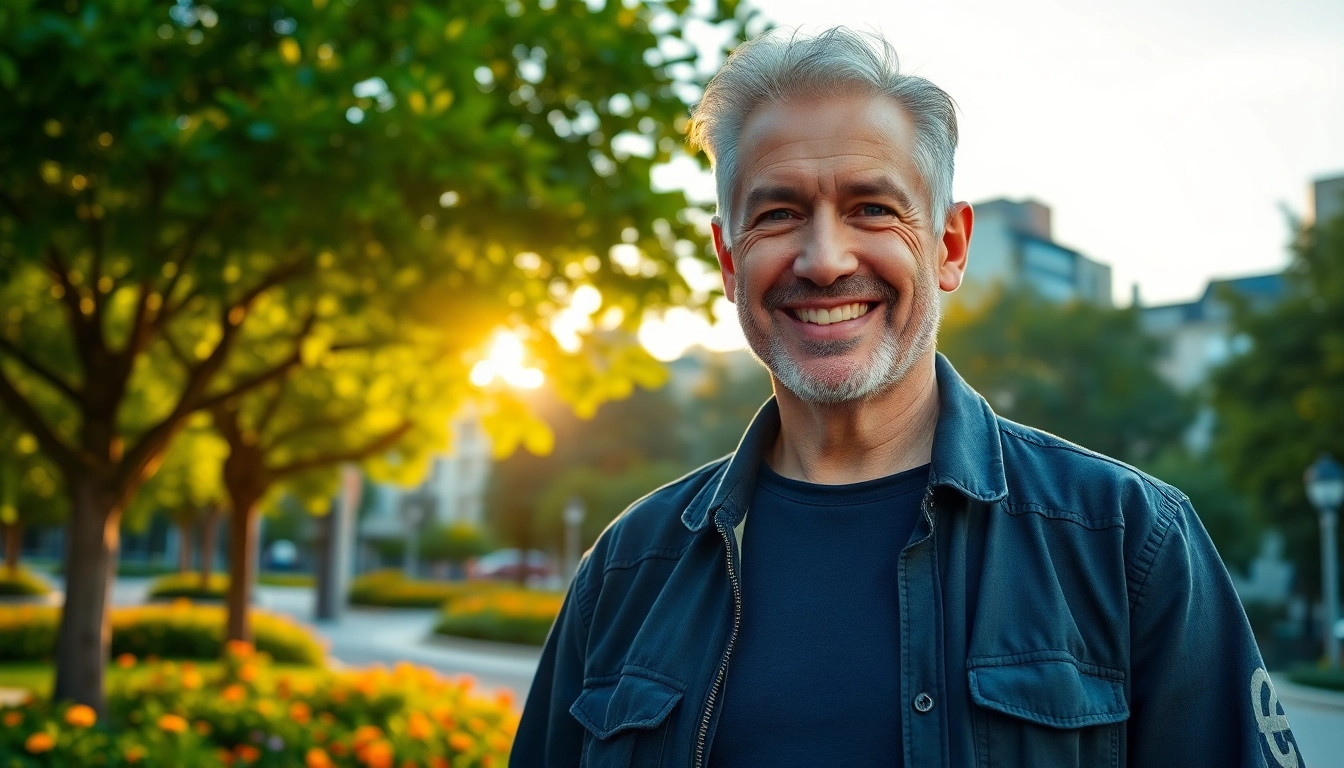Decoding the DILF Phenomenon: Understanding Its Cultural Impact and Appeal
The term dilf has increasingly become embedded in modern vernacular, capturing a unique aspect of contemporary sexuality and masculinity. Originally emerging as a playful, provocative acronym, it stands for “Dad/Daddy I’d Like to F*,” and refers to an older, mature man who is considered attractive and sexually appealing. While it often conjures images of fathers, the term is not strictly reserved for men who are actual fathers; rather, it celebrates the archetype of the desirable, confident, and often rugged older male figure. Its rise in popularity can be traced through various cultural channels, from movies and TV shows to internet memes and social media communities. This article explores the origins, cultural evolution, and societal implications of the DILF phenomenon, shedding light on what it reveals about modern perceptions of masculinity, attractiveness, and sexuality.
The Origins and Definition of DILF
What Does DILF Mean?
The acronym dilf is a colloquial term that emerged within internet culture and sexual slang. It is a humorous and often admiring label applied to older men who exude attractiveness and charisma. Unlike the term MILF—”Mom I’d Like to F*,” which gained popularity in the early 2000s, DILF is generally used to describe a man who embodies a sense of rugged masculinity, maturity, and sexual appeal. The term itself is versatile; it can be used humorously, as a compliment, or even seriously, depending on the context and intent of the speaker.
Historical Context and Popularization
The term DILF was popularized shortly after the rise of MILF, which became a cultural phenomenon thanks to media like the 1999 film American Pie. MILF quickly entered mainstream consciousness, leading to the emergence of similar terms for men, with DILF following suit. The phrase gained traction on internet forums, social media, and pop culture, often used to describe charismatic, attractive older men who defy traditional age-related stereotypes of masculinity. Its playful nature and the shock value of the acronym helped it spread rapidly across online communities.
Popular Culture and Media Representation
Film and Television
One of the earliest notable appearances of a DILF character in popular culture was in American Pie Presents: The Book of Love (2009). The film, coming from the very franchise that popularized the term MILF, introduces Rob’s father—a character portrayed as attractive, confident, and mature—who is affectionately referred to as a DILF by fans. This portrayal underscores the comedic yet respectful recognition of older male attractiveness in mainstream media.
Another significant cultural reference is the Netflix series Riverdale, which debuted in 2017. The character Fred Andrews, played by Luke Perry, is widely considered a DILF by fans due to his rugged charm, strong personality, and fatherly yet attractive appearance. His character embodies the archetype of the dependable, strong, and alluring older man who exudes both authority and sex appeal.
Video Games and Fan Culture
In the realm of video games, the character Daddy Halsin from Baldur’s Gate III has garnered a following, with fans nicknaming him “Daddy Halsin” because of his protective, strong, and mature persona. Although not explicitly labeled as a DILF within the game, fans have embraced the archetype, highlighting how the DILF image extends beyond traditional media into gaming culture. This crossover demonstrates the broad appeal of the DILF archetype across different entertainment platforms.
Internet and Social Media Influences
The DILFs of Disneyland and Online Communities
The rise of social media has played a crucial role in shaping and amplifying the DILF phenomenon. Instagram accounts such as DILFs of Disneyland with over 300,000 followers showcase photos of attractive, mature men spending quality family time at Disneyland. These images often depict men who embody the DILF archetype—confident, attractive, and approachable—highlighting how the concept is celebrated in real-life settings. Such accounts blend humor, admiration, and a sense of community, creating a space where fans can appreciate the appeal of older, masculine figures.
Similarly, online communities like r/DILFs on Reddit have gathered nearly 100,000 members who share NSFW content, memes, and discussions centered around the archetype. These digital spaces serve as outlets for fans to explore and celebrate the appeal of DILFs, reflecting a broader acceptance and normalization of diverse expressions of masculinity and sexuality.
The Role of Memes and Viral Content
Memes and viral videos have further propelled the DILF trend, often combining humor with admiration. The playful use of the term in memes helps destigmatize older masculinity, framing it as desirable and aspirational. This cultural shift signifies a broader acceptance of diverse age groups within sexual attractiveness and challenges traditional notions that youth is the sole domain of physical appeal.
The Appeal of DILFs: Why Today’s Culture Embraces the Archetype
Redefining Masculinity and Age
The DILF archetype resonates with contemporary audiences because it challenges stereotypical ideas about masculinity and aging. Instead of equating age with decline, modern culture increasingly values maturity, confidence, and experience as attractive qualities. DILFs exemplify a form of masculinity that is both strong and nurturing, combining physical appeal with emotional depth.
Celebrity and Media Influences
Celebrities like George Clooney, Idris Elba, and Hugh Jackman have often been regarded as real-life DILFs, embodying the qualities associated with the archetype. Their popularity underscores how an older male celebrity can project sex appeal well into middle age, influencing societal standards of attractiveness and desirability.
Humor and Playfulness
The playful, tongue-in-cheek nature of the term dilf makes it an accessible way to celebrate masculinity without taking itself too seriously. It allows people to express admiration and attraction in a humorous, lighthearted manner, fostering a more inclusive view of sexuality that encompasses different ages and body types.
DILF in Pornography and Search Trends
Search Trends and Popularity
In the digital age, search engines reveal that dilf has become a widely searched tag within the adult entertainment industry. Its popularity as a search term demonstrates the significant demand and curiosity surrounding this archetype. Pornographic content targeting DILF themes often features older, attractive men, reflecting and reinforcing societal fascination with the archetype.
Implications for the Industry
The increasing visibility of DILF-related content suggests a shift toward more diverse representations of masculinity in adult media. It indicates a broader cultural acceptance and acknowledgment of attraction to mature men, breaking away from youth-centric standards. This trend also aligns with the growing recognition of older men as desirable figures in real life, not just in fantasy.
Future Trends and Societal Perceptions
Changing Attitudes Toward Aging and Attractiveness
As society continues to evolve, perceptions of attractiveness are becoming more inclusive of age, body type, and personality. The DILF archetype exemplifies this shift, emphasizing that masculinity and sex appeal are not confined to youth. The growing acceptance of older men as desirable figures hints at a future where age diversity is celebrated within the realm of sexuality and attractiveness.
Media and Cultural Narratives
Future media portrayals are likely to feature more complex and diverse representations of DILFs, moving beyond stereotypes to showcase depth, vulnerability, and strength. These narratives will help normalize the archetype and expand its appeal across different demographics, fostering a more inclusive understanding of masculinity.
Social Perceptions and Gender Dynamics
The DILF phenomenon also prompts discussions about gender dynamics, attractiveness, and societal expectations. It challenges the notion that only young men are desirable, encouraging a reevaluation of what qualities are valued in masculinity. This evolving perception can lead to greater acceptance of older men and a broader appreciation for maturity and experience.
Conclusion: The Significance of the DILF Archetype
The emergence and popularity of the dilf archetype reflect broader cultural shifts toward embracing diverse expressions of masculinity, sexuality, and attractiveness. It underscores a move away from youth-centric ideals, highlighting qualities like confidence, maturity, and strength as desirable traits. As media, social platforms, and societal attitudes continue to evolve, the DILF phenomenon offers insight into modern masculinity—one that values experience, charisma, and authenticity.
Ultimately, the DILF archetype exemplifies how cultural perceptions of attractiveness are fluid and influenced by a variety of social, media, and personal factors. Its rise signifies a more inclusive, playful, and nuanced understanding of masculinity, encouraging society to appreciate men of all ages and stages of life. The ongoing popularity of the term and its associated imagery suggest that the archetype will remain a relevant and influential part of contemporary culture for years to come.



